To a greater or lesser degree, most of us live in ‘the gap’. In simple terms, this can be defined as the difference between the life you really want and the life you actually have at any given moment. We live in a society where material wealth is coveted and are encouraged to dream of having luxurious lifestyles, depicted for us in endless stories, movies and TV shows. We have been subtly influenced to associate consumption with happiness. We crave the latest model of this or the newest version of that. Even when we obtain the object of our desire, or the relationship we have been dreaming of, the pleasure tends to be short-lived and we constantly find ourselves repeating the same cycle. For some of you, this may lead to anxiety on a daily basis whilst for others, it may give rise to an occasional feeling or sensation that something is missing or detracting from your sense of happiness and contentment. If any of this sounds relevant, you may well be interested in understanding more about what creates this gap and what you can do to eliminate it.
Above: We believe that happiness will result from the accumulation of material wealth and consumption, which is admired, envied and encouraged in society and ‘sold’ to us (through our subconscious mind) in mainstream media, advertising and entertainment
Depending on who you are, your gap might be the juxtaposition between the successful image you project to the outside world whilst constantly being frightened that someone will expose you for not being good enough. You may be the envy of friends, with a great job and plenty of material comfort. Yet when you are alone, you experience a nagging feeling that you are living someone else’s life. Or maybe you feel stuck in a relationship that never quite meets your expectations. Perhaps you yearn to connect with and make a fundamental difference to others, yet never quite seem to make it happen. Or maybe you constantly compare yourself to others and judge other people too quickly and too often. Maybe your loved one or close friends never give you their attention fully. The list is endless. At different times of my life, many of these have applied to me. If you find yourself caught in such a gap, then the chances are high that you are probably experiencing unhappiness, or ‘suffering’ as the Buddhists refer to it.
Above: This short video shows how we yearn to connect with others, which in our fast-paced, high-tech, socially networked society seems to be increasingly difficult to do and a source of ‘suffering’ for many people. This is one of many things that prevent us from experiencing true happiness
Below: The list of things that creates a gap in our lives is endless!
You may be surprised to hear that Buddhists have offered ‘mindfulness’ teachings to humanity for thousands of years. When correctly applied in practice, these teachings direct you towards a way of living that can create an enormous sense of freedom and inner-peace, even in the face of situations that seem to your mind to be a long way from the ideal. According to Buddhist texts, the root of all suffering is desire – our attachment to seeing and wanting things to be a certain way, rather than accepting them as they are. This creates unpleasant feelings and until you let go of wanting to change what you are experiencing, you will remain stuck with them. Most of us will do anything we can think of to avoid this scenario.
My own life provides a good illustration of this. In 2005, despite spectacular success in the business world and an affluent lifestyle in London, the circumstances of my life were causing me so much suffering, a radical change was the only way that I believed my fortunes could be changed. To discover if it really was possible to be happy without having any of the things I had been led to believe were at cause, I decided to experiment. I stopped working, sold my home and business, gave away my possessions and exchanged my high-profile, materialistically comfortable life for a backpack and a laptop. Heading for Thailand, it was initially thrilling to be completely free of any responsibility and totally anonymous. With loads of free time on my hands, all I had to decide was what to eat and where to sleep. From the outside, it might appear to you as if I was ‘living the dream’.
Above: From award-winning businessman in 2002 (left) to global nomad. Giving up my addiction to material wealth for a while, to explore my inner world and life beyond my comfort zone, was my way of finding out the truth about deep and lasting happiness
You might be surprised to learn that on the inside, I did not feel free and could not relax. Which meant I could not really enjoy this new life fully. Haunted by an unwanted divorce, the death of my father and letting go of my successful image, it was hard for me to define who I now was, even to myself. Feelings of shame were arising in me much of the time as I reflected on the past and how I could have been a better husband. And fears about my security were rampant as I peered into my future. With no idea of what was coming next, hours were lost thinking about how I might be able to finance my life going forward. On top of all this, I was in a difficult relationship with a woman I was travelling with and the net result was constant stress and worry. A part of me wondered if there might be some way out of this state and I was searching for it.
In early 2006, after 6 months of experimentation, someone started talking to me about meditation and a particular technique known as ‘Vipassana‘. He also informed me it was being taught to beginners in a ten-day silent retreat at the Suan Mokkh International Dhamma Heritage, in southern Thailand. I knew it was the thing I had been looking for and registered immediately. To cut a very long story short, those ten challenging days (ironically, under the skilful guidance of an English monk called Dhammavidu) gave me an education and an experience like none before. By training my own mind to be quieter, I was finding peace, wisdom and insight inside myself, answering my own questions as opposed to looking for other people to give me the answers. There was no longer any need for alcohol or toxins to feel totally relaxed. For the first time, out of that beautiful and extra-ordinary silence, I had experienced what mindfulness was.
Above: When you are fully present to every moment, life is beautiful – notice it
When you take into account that only months before, I had been living the life of a hard-core businessman, focused on making money and not at all on my own well-being, this was quite a big shock to my system. After the retreat, I still had no plans or any idea about what to do. But through the stillness of those wonderful days and the opportunity to confront my own mind without any distractions, I started to see a shift in my beliefs about the future. Whatever was coming next, I would simply follow the flow of life and all would be well. There was a kind of certainty about that with no need to fear any longer. The effect it had on me was quite profound and I have maintained some sort of mindfulness practice ever since.
In the last few years, I have had the opportunity and the privilege of studying with many amazing teachers and have attended retreats with the Dalai Lama and Thich Nhat Hanh. In 2014, I vowed to live my own life more consciously, by taking the Five Mindfulness Trainings during the summer retreat at Plum Village monastery, the home of Thich Nhat Hanh and his monks and nuns. Over the last decade, being mindful has enabled me to experience less fear, more contentment, being comfortable with uncertainty and an ability to appreciate the small things in life. Best of all, my happiness is no longer dependent on the acquisition of anything external, including material goods and the approval of others. In short, I feel free.
Above: Short video of Thich Nhat Hanh visiting Google with members of the Plum Village Sangha (community) to share his insight and wisdom about mindfulness
Below: When asked what surprised him most about humanity, the Dalai Lama replied “Man surprised me most. Because he sacrifices his health in order to make money. Then he sacrifices money to recuperate his health. And then he is so anxious about the future that he does not enjoy the present; the result being that he does not live in the present or the future; he lives as if he is never going to die, and then dies having never really lived.”
There is massive interest in the business world too, as organisations try to counter stress, burn-out and other conditions that might adversely affect the performance of their key managers and leaders. In his book “Mindful Work: How Meditation Is Changing Business from the Inside Out“, David Gelles reports that although it is hardly mainstream, meditation in the workplace is no longer fringe.
According to The Guardian newspaper, organisations as varied as the US Army, Google, Transport for London, PWC and the Home Office have provided mindfulness training for employees. And increasing numbers of schools are incorporating it into the curriculum for 13-14 year olds. A report published in 2014 analysing data from 47 clinical trials involving 3,000 participants suggests that mindfulness produces measurable improvements of up to 20% in symptoms of anxiety and depression compared to people who practise another activity, and can also help alleviate feelings of stress and enhance quality of life. Other researchers have found that mental training alters our brain intentionally and changes produced can become permanent. These include:
Until a few years ago, these kinds of mindfulness teachings were mainly of interest to holy men, spiritual seekers, hippies and new age travellers. And you had to go to some lengths and a lot of expense to get access to them, as I have. But today, that has all changed. More and more people in the mainstream have become disillusioned with conspicuous consumption. They get over stressed from constantly trying to ‘keep up’ with their friends, feel exhausted from the endless cycle of failed relationships and feel a sense of pointlessness and isolation in their daily lives. Consequently, the demand for this knowledge from the general public is growing fast. As with so many things, the Internet is making it possible for everyone to find ways of learning and applying these mindfulness practices without having to give up a lot of their personal time or without having to leave your home, family or career. And if confirmation was needed that becoming self-aware has now become a mainstream topic, then it has been provided by none other than Disney, through their recently released animated movie “Inside Out“. Here is the trailer:
Above: “Inside Out” has just been released and should be playing at a cinema near you soon
A Google search for the term “mindfulness courses” will produce over a million hits. Business schools, Universities, higher education establishments and a host of newcomers like Coursera and edX offer many alternatives if you are looking to train your own mind and find greater inner peace. Google even has its own programme, called “Search Within Yourself“. Many of these online courses are free and are essentially self-taught, distance learning programmes. Notably, most of these free courses do not have any interactive group work in which you get to try out some of the concepts you are learning about. They can provide a good basic understanding and get you interested in going deeper, but are unlikely to really create sustainable change in the way you live and experience the world.
My own mindfulness practice has had such a big impact on me, I have started to guide others through one particular online programme called TeamUp. Lasting nine weeks, with inter-related modules of learning and application which build on each other, groups of three (called ‘Triads”) take a collective journey of transformation. So far, my triad participants have come from all over the world. Through self-study and practical exercises, and the weekly group video conference which I facilitate, participants are able to stand back from their thoughts, and start to see their patterns. The small, intimate group provides a non-judgmental, compassionate and encouraging learning environment in which there is no pressure to achieve specific results like academic tests; just total freedom to apply knowledge and insight gained in whatever way works best for each person.
As practice – not the theory – is key, I also encourage participants to create learning ‘laboratories’ in their (real) lives. This helps them get used to trying things out using new and different approaches and gives them a chance to observe what happens. By becoming more aware of the world around you and switching off your ‘auto-pilot’, noticing and watching your thoughts and feelings, waking up to the physical sensations of things, you can actually train yourself to notice when your thoughts are taking over, and realise that thoughts are simply ‘mental events’ that do not have to control you.
These online programmes, like TeamUp, are ideal if you are committed to your own personal development. They provide a very personal, practical and intimate learning environment and as long as you have identified a meaningful outcome to work on during the programme, you can expect to see a significant shifts in your chosen area(s). Plus, you will most likely experience considerable expansion from supporting the other two participants to grow, by challenging them and providing feedback during the weekly calls.
The main thing to remember, if you want to live outside ‘the gap’ is that it requires a commitment to practice – the state, or energy of being mindful results from behaviours that you do. As Brian Baurle, founder of TeamUp says, “We all practice all the time. We are practicing something right now. Some of us practice worry. Some of us practice joy. Some of us practice anxiety and stress. We want to become conscious of our practice. Right now, you’re practicing but you’re not aware that you’re actually doing a practice. It just is a part of whatever has been programmed in your brain and most of us are wandering through our lives with no real sense of being ‘awake’. We want to create a consciousness that allows you to see moment to moment, in the now, exactly what it is that you’re practicing. And then we have the ability to choose. Instead of being annoyed, we can choose to be compassionate. We can choose who we are.”
Above: There is a free, three-part video series available here, explaining how becoming more mindful can fundamentally change your experience of life
One way that being mindful can help is when you are being ignored, rejected or face some kind of disapproval. To stop me from reacting, friends used to advise me to ‘not take these things personally’ and to be honest, I never really knew what this actually meant or how to avoid doing that. Through being more mindful and observing my thoughts closely in those situations, I began to see a distinction that is not very obvious at first. In those situations, I saw there were two things that called for my attention. The first was whatever was actually happening right in front of me – another person doing or saying something. Quite obvious really. The second call for attention was my self-talk, or inner dialogue which was usually loud and demanding. I saw how my feelings would get triggered by that – as I imagined what might happen to me as a result of what the person was saying to me. This could range from mild irritation, worry or a sense of panic in extreme cases.
This was very illuminating for me. If you study this scenario carefully, you will spot that what is happening externally is real, observable, unarguable – it simply ‘is what it is’. But what is happening inside of me is imagined, speculative and projected into the future and of little use in this moment now. Any reaction it prompts would be pointless and possibly destructive. It took me a while to figure this out. For a while, I consciously practiced switching my attention to the other person, becoming more curious about them. Now I have formulated new habits and responses that cause me much less emotional disturbance. I know what ‘not taking it personally’ actually means and how to do it. In his book “The Trauma of Everyday Life,” Mark Epstein says “Awakening does not mean an end to difficulty; it means a change in the way those difficulties are met. I want to meet whatever arises with an open heart and with awareness of the places where my busy mind might be making situations more difficult than they need to be. How do you want to meet whatever arises this week?”
One final thought for you. Although the initial motivation to become more mindful may arise out of your personal suffering and your wish to be happier as an individual, it is worth considering the bigger picture for a moment. The world is experiencing its own collective struggle as mankind plays out the dramas that are driven by greed and fear on a daily basis. We face irreversible destruction to our environment, regression to a feudal system in our societies, needless famine and poverty and even extinction. Through becoming more mindful, and connecting with others doing the same, there is at least an opportunity to reverse some of these trends and create our world being more blissful, right now. We are all inter-connected. When one person transforms, it affects everybody. As the Dalai Lama always says when asked what toppings he would like on his pizza: “Make me one with everything!”
If you would like more information about personal growth, mindfulness, Plum Village, TeamUp or any of the thoughts expressed in this article, please email me at: ray@thedailyexplorer.com
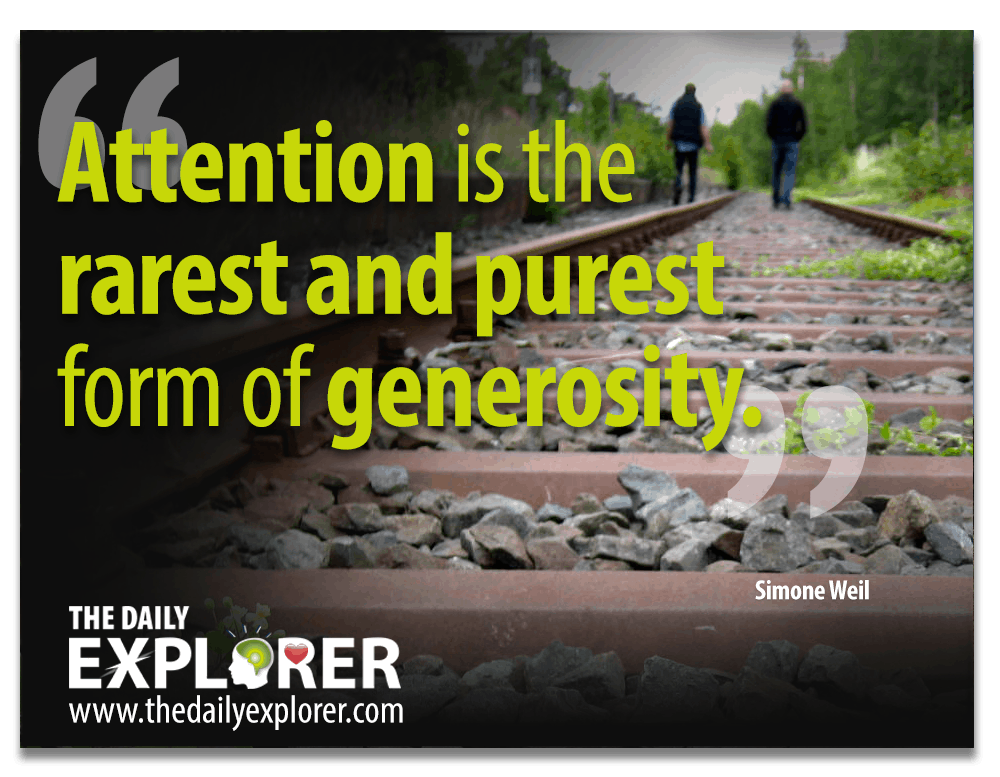
Please feel free to copy and share this image and any other Inspiration Cards

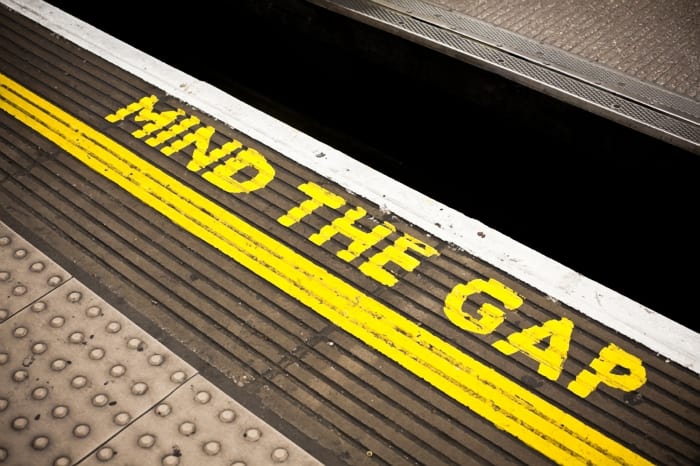



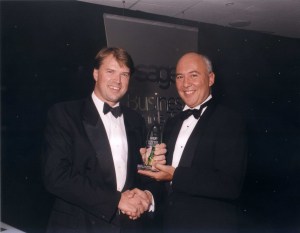
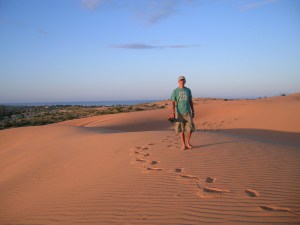
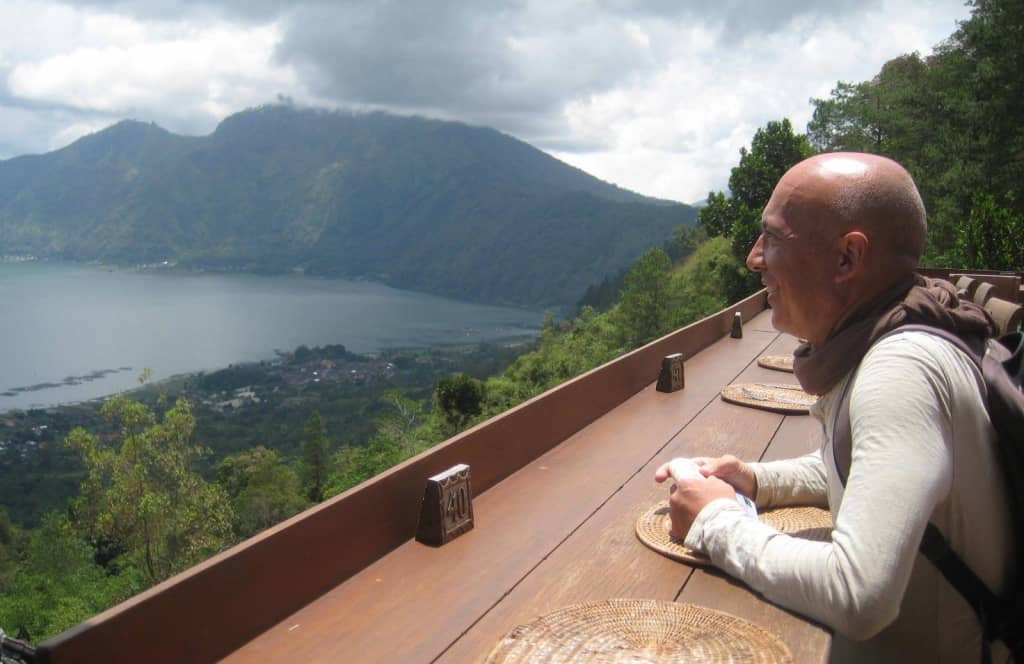

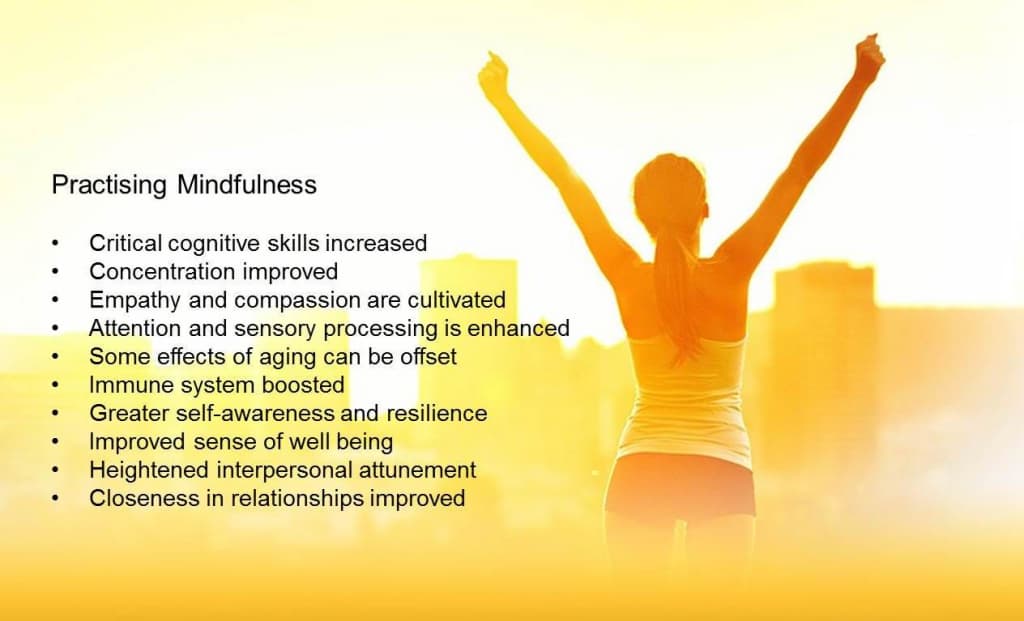
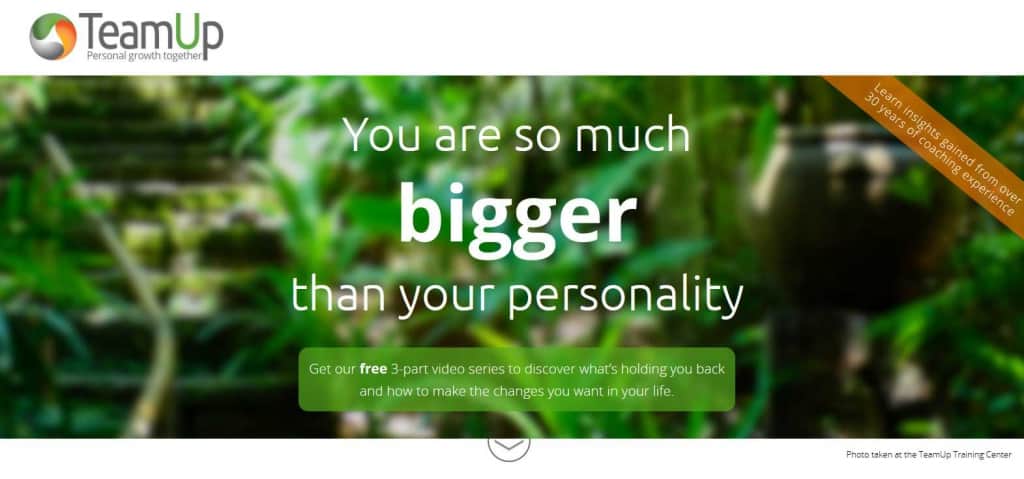
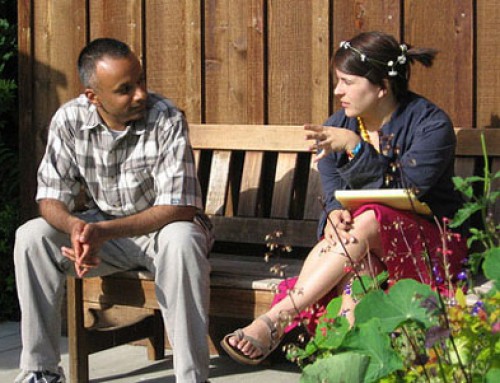
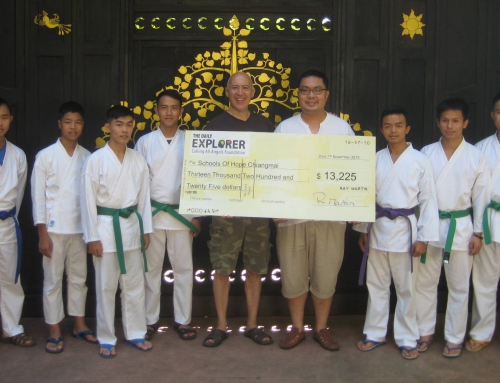
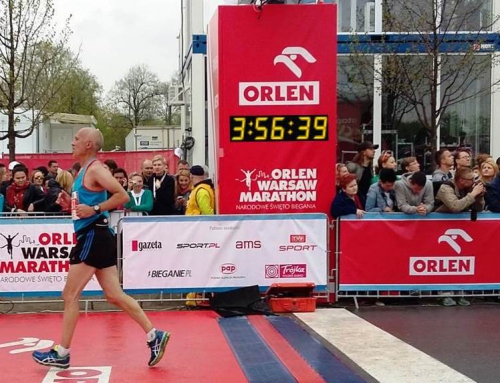
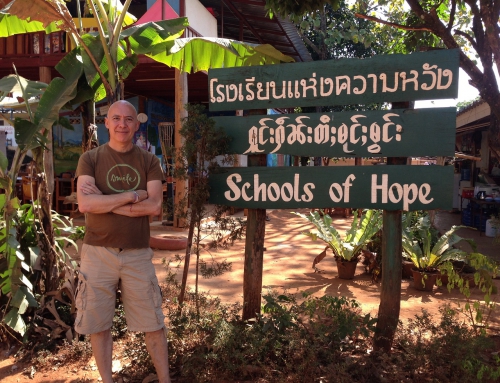
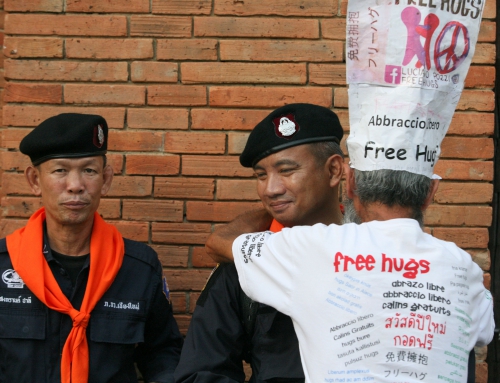
What a great article Ray. Well written, informative, engaging and wise. Makes me thing I might need some practice of mindfulness as even though doing what I love can be very stressful at times – it takes constant energy and faith to step into the unknown. Besides that is the need to overcome limiting beliefs and fears which can feel insurmountable at the time. With all this crazyness in the world it would be good to have a stillness inside. I could go on and on why we all might need mindfulness. However one thing I pose – does it make one lose passion because of the need to be so detached?
Hi Nicole. I have lost energy for some things, however they are generally things that I was motivated to do for the approval of someone else, or through fear of what might happen if I didn’t. Those things which are truly for me and contribute to my aliveness and well-being, like running or mentoring people, have continued to be activities that I am passionate about and make a lot of effort to develop myself in.
Hi Ray, thanks for sharing your story.
You might remember that we promote the (very Buddhist) concept to be ‘detached and engaged’. Whenever I bring that up, I often get comments from some people that they can hardly believe to have the same passion without attachment. My personal experience is very different though. Ever since I made the decision to adopt this concept in my professional life (at that time I didn’t know of the Buddhist background of this concept but realised that through a very painful personal experience in my second job upon retrospection), I don’t find at all that I lost even a little bit of passion for what I was doing. I merely accepted that I can’t fully control the outcomes and that therefore attachment is not useful.
So yes, I’m passionate and engaged towards the outcomes that matter to me, but I’m not attached to them. In fact, the Taoist interpretation of any outcome: ‘good luck, bad luck, who knows’ helps to accept the outcomes that happen for what they are, no matter what they are.
Thanks for spreading the word…
Hello Ray,
Nice to hear of your journey from a different perspective than before. I am in the middle of a Thich Nhat Hanh online course ‘The Mind and Body are One’ which is lovely – he is covering many basic Buddhist principles in a very accessible but deep way. I’m getting a lot from it. Well done for doing the Plum Village trainings! And best of luck with the work you are doing. XX